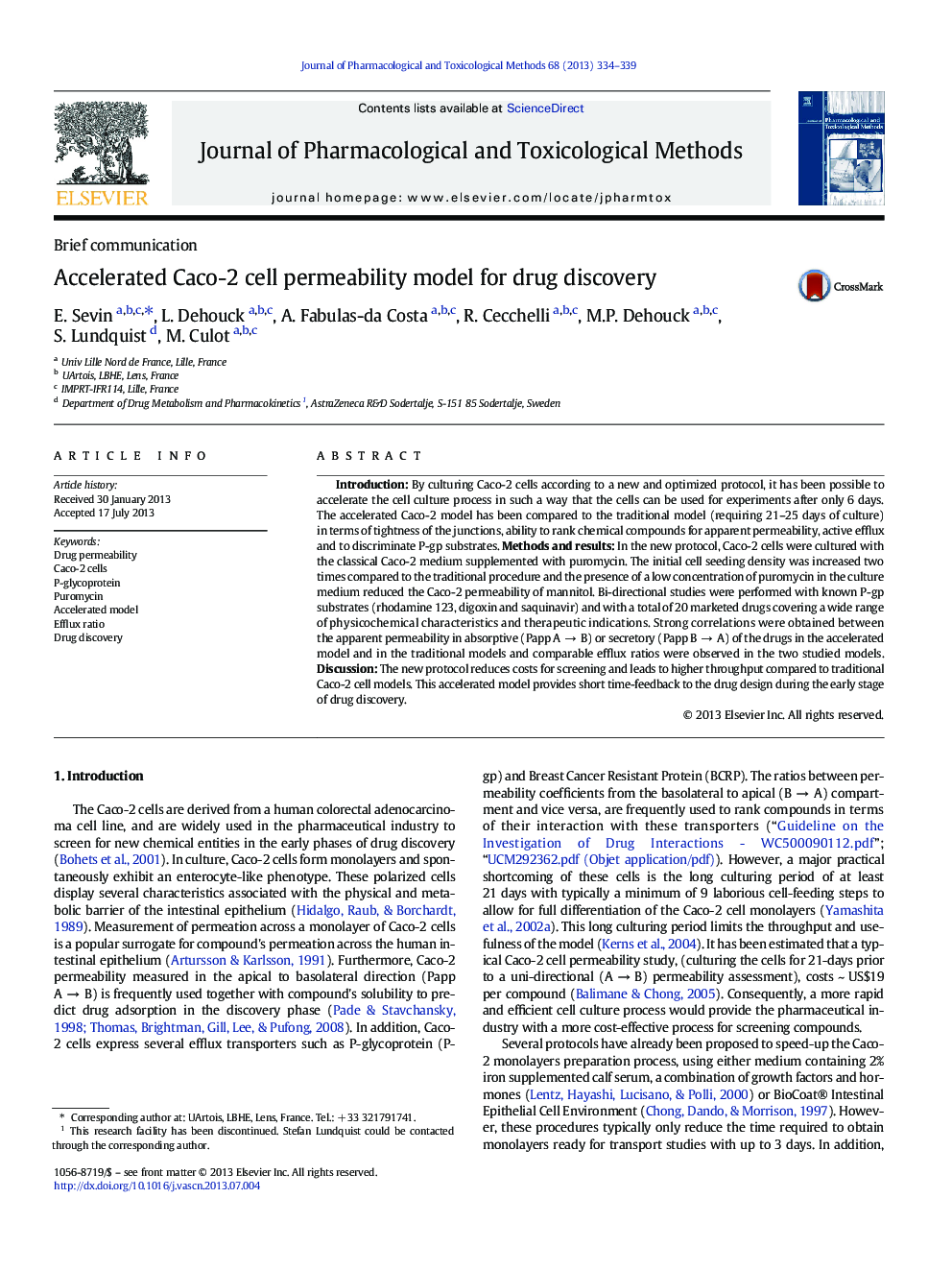| کد مقاله | کد نشریه | سال انتشار | مقاله انگلیسی | نسخه تمام متن |
|---|---|---|---|---|
| 2549161 | 1124504 | 2013 | 6 صفحه PDF | دانلود رایگان |

IntroductionBy culturing Caco-2 cells according to a new and optimized protocol, it has been possible to accelerate the cell culture process in such a way that the cells can be used for experiments after only 6 days. The accelerated Caco-2 model has been compared to the traditional model (requiring 21–25 days of culture) in terms of tightness of the junctions, ability to rank chemical compounds for apparent permeability, active efflux and to discriminate P-gp substrates.Methods and resultsIn the new protocol, Caco-2 cells were cultured with the classical Caco-2 medium supplemented with puromycin. The initial cell seeding density was increased two times compared to the traditional procedure and the presence of a low concentration of puromycin in the culture medium reduced the Caco-2 permeability of mannitol. Bi-directional studies were performed with known P-gp substrates (rhodamine 123, digoxin and saquinavir) and with a total of 20 marketed drugs covering a wide range of physicochemical characteristics and therapeutic indications. Strong correlations were obtained between the apparent permeability in absorptive (Papp A → B) or secretory (Papp B → A) of the drugs in the accelerated model and in the traditional models and comparable efflux ratios were observed in the two studied models.DiscussionThe new protocol reduces costs for screening and leads to higher throughput compared to traditional Caco-2 cell models. This accelerated model provides short time-feedback to the drug design during the early stage of drug discovery.
Journal: Journal of Pharmacological and Toxicological Methods - Volume 68, Issue 3, November–December 2013, Pages 334–339